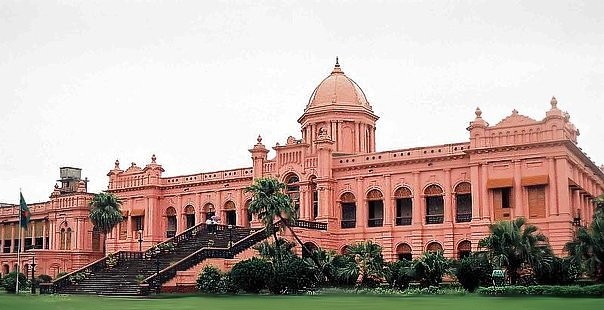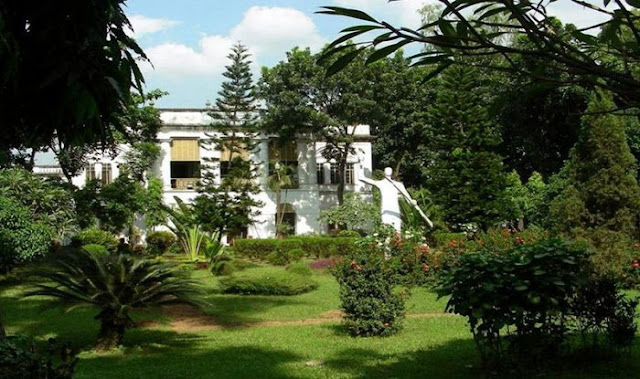This is the story of The First Electric Light in Dhaka
Telling the end of the nineteenth century. Although Dhaka is the fundamental city of East Bengal, there are numerous
obvious contrasts from Kolkata. The utilization of gas lights has been seen in
the city of Calcutta since 1857. In the interim, when dusks, dimness drops on
the tremendous towns of East Bengal. It's absolutely impossible to recognize
Dhaka and Para. Although there are lamp fuel lights in a few
significant roads of the city, the life expectancy of the lights is decreased
because of solid breezes or downpour. There are still ceiling fixtures in the
places of the rich. All that else is Huricane, cup light, and candlelight.
In the 18TH century, the British government regarded Nawab Abdul Gani with
the title of Knight Commander of the Star of India (KCSI). His child Nawab
Ahsanullah vowed to give gas lights on the roads of Dhaka to honor his dad's
accomplishment. As guaranteed by the Nawab, steps were taken to supplant the
oil lights out and about. Be that as it may, crafted by introducing gas lights
has been postponed because of different reasons. Over 10 years have passed.
Another century has shown up throughout the entire existence of human progress.
Gas lights are not seen in the city of Dhaka.
Nawab Ahsanullah, nonetheless, had the option to keep his
statement eventually. This time he shocked the individuals of Dhaka by giving
gas lights as well as electric lights. Only nine days before his passing, Nawab
Bahadur's fantasy worked out as expected, holding his since quite a while ago
held guarantee to the individuals of the city. Power was accommodated four and
a half lakh rupees. Electric lights were lit on the principal streets of Dhaka.
The light likewise shone in the Nawab's number one Ahsan Manzil.
The arrival of electricity in Bengal from ancient times:
Thomas Alva Edison lit the main electric light in 1899 in
Menlo Park, California. At that point came the utilization of electric lights
in London, in 180. Within a couple of years, power arrived at homes in Europe
and America. Be that as it may, it took a long effort for the West to become
accustomed to electric lighting rather than gas lights and wax. The expense of
power was additionally generally high. Then, after the lights were lit in
London, power was additionally brought to Kolkata, the capital of British
India, at the activity of the British.
In 1895, the Calcutta Electric Lighting Act was passed.
Indian Electronic Company Limited, later renamed Calcutta Electronic Supply
Limited, was begun in 1898 by the Kilburn Company of London. Prior, lights were
lit utilizing generators, however, the main force flexibly in Calcutta was begun
in 1899. A perpetual electrical line is being set up at the activity of
Calcutta Electronic Supply Limited. The main electric light in Calcutta was lit
on Harrison Road, the current Mahatma Gandhi Road.
Albeit electric street lamps were presented in Dhaka in the
20th century, the primary power client in East Bengal was the Raja of Bhawal
Pargana in Gazipur locale. It is said that in the nineteenth century, he
imported generators from Bilat and enlightened the castle.
Streetlamps in the city of Dhaka:
The utilization of lights in Dhaka began in 1869. As
indicated by the guidelines of the president and officer of the region George
Graham, the common specialist. Henry Cutcliffe arranged a report on sewerage
and advancement in Dhaka. In the report, he referenced the establishment of
streetlamps in the roads of Dhaka. Notwithstanding, rather than gas lights,
Cutcliffe proposed to utilize lamp fuel lights. Seeing the report, Nawab Khwaja
Abdul Gani stated, if this report is executed, Dhaka will turn into heaven.
In any case, the monetary state of the individuals of Dhaka isn't prosperous.
He likewise said that they couldn't give monetary help to metropolitan turn of
events.
In 1870 Nawab Abdul Gani, himself set up a gaslight processing plant in Dhaka. Then, when Queen Victoria was broadcasted Empress of India in 18, the British government attempted different undertakings to praise the occasion. A municipal council was framed with prominent people on the event of the occasion in Dhaka. An asset of Rs. 8,500 was shaped with the commitment of the individuals at the activity of MIT. It was concluded that 100 lamp fuel street lamps would be introduced at Wise Ghat from the then city office to Chawkbazar. Later 60 lamp fuel light posts were introduced under this task.
The Promise of Nawab Bahadur:
In 1886 Nawab Abdul Gani KCSI After accepting the title, his
child Nawab Ahsanullah reported introducing gas lights in the roads of Dhaka.
In articulation to the Englishman paper in Kolkata, he stated:
At that point, quite a while passed. At that point, individuals had presumably disregarded the Nawab's guarantee. In 1896 Nawab
Khwaja Yusufjan turned into the leader of the district. About He was the spouse
of the sister of Nawab Ahsanullah. The next year, the issue of streetlamps came
up again in Dhaka Prakash. It was kept in touch with Nawab Ahsanullah that he
probably won't have had the option to depend on the district for such a long
time. Thus in twelve years, no gas light was seen out and about. This time after
the Nawab himself turned into the head of the Dulabhai region, there was no
wavering to expect streetlamps.
If to condemn the paper, Nawab Ahsanullah truly made courses
of action to introduce streetlamps this time. Nonetheless, despite the fact
that he was a 'Nawab on paper', he demonstrated that he was no exactly some
other lord. Rather than gas lights, this time they poured lakhs of rupees
behind the British electric lights.
The Dhaka Electric Light Trustees and Messrs. Octavius Steel and Company:
In 1901, The Dhaka Electric Light Trustees were framed. The
obligation of controlling this board was given to the district. The Nawab gave
four and a half lakh rupees to the board of trustees' assets for the establishment
and support of the light. On July 5 of the very year, around endorsed by James
Thomas Rankin for the Committee of Trustees was distributed in the paper. As
indicated by the Dhaka Electric Light Trustees Act of 1895, the public
authority has applied for licenses to gracefully power to significant spots and
streets in Dhaka.
The streets referenced in the warning were-Rahmatganj Road,
Chawkbazar Circular Road, Mogaltuli Road, Nalgola Road, Babu Bazar Road,
Comitiganj Road, Armenia Street (up to Roy Bahadur Road), Islampur Road,
Ahsanmanjil Road, Patuatuli Road, Watui Road, Patuatuli Road. Banglabazar Road,
Dal Bazar Road. Farashganj to Loharpool Road, Digbazar Road. Victoria Park,
Laxmibazar Road, Sadarghat Road. Shankharibazar Road. Johnson Road. Nawabpur
Road. Railroad Staff Quarter Road (up to Ramna Teaching Ground) Jamdani Nagar
Road and Rajar Deuri Lane to Saheb Bazar.
At last, the electric light glimmered:
Another event was added for lighting in Nawabbari. The
wedding function of Khwaja Atiqullah, child of Nawab Ahsanullah was coordinated
in a sleek way. The day was December 6, 1901. The frigid winter of
administration in Bengal. However, disregarding the extreme winter, the city
occupants went to the premises of Ahsan Manzil. The meeting is perched on the
verandah of the second floor of the manzil. Little Sir John Woodburn has been
welcomed. He would come and light the power, that was the discussion. However,
Latsaheb couldn't come because of disease.
Charles Walter Bolton, Secretary, Board of Revenue,
Calcutta was the main visitor. He turned into the focal point of the gathering
and sat directly in the center. Nawab Ahsanullah sat down on the right. The civil
official is perched on the left. The meeting began at around five o'clock. Mr.
Official read an article on electronic lights. At that point, Mr. Bolton came to
give the discourse. He commended the liberality of Nawab Ahsanullah. In one
piece of the discourse, he said that the duty of the district should be
expanded, and Tagada ought to improve the waste framework. He likewise found
out if power would be permitted on limited, tight streets.
At that point came the much anticipated second. Mr. Bolton
squeezed a switch. At that point, a brilliant light went ahead. The light is
consuming in a 'supernatural' power without oil or gas, which is an awesome
thing for customary individuals. Everybody present saw a memorable occasion
that day. Unexpectedly, the city tenants, familiar with seeing the roads of the
city in lamp fuel lights and twilight, rethought their adored Dhaka.
The following day 'Dhaka Prakash' was printed-
"Following the previous night, helpless before Shri
Nawab Bahadur, the fundamental streets of Dhaka city unexpectedly burst into
giggling ... In a city like Dhaka, such a scene would fall on the eyes of the
individuals.
Undoubtedly, without the beauty of Nawab Ahsanullah, power
flexibility in Dhaka would not have been actualized so quick. Tragically, he died
on December 16, seven days after the occasion. Be that as it may, the Nawab's
cost behind the electric light appeared to be an extravagance to many. There
was a tempest of analysis in the press about whether the gigantic measure of Rs
4.5 lakh ought to have been spent on power without spending it on different
areas of the metropolitan turn of events. The measure of cash that the Nawab spent
on lighting a couple of first-class houses and roads might have been spent on
lamp oil or gas lights to illuminate the entire city. Yet, regardless of how
much analysis there is, for the individuals of Dhaka, meeting Nawab Ahsanullah
is Prometheus. Similarly, as Prometheus offered fire to the individuals, so
Nawab Ahsanullah carried power to the individuals of Dhaka.
One may even envision that one day this electric light of
the street would spread cherishing warmth in the city's existence with the light
of the moon. The streetlamps have changed over the long haul. Halogen
supplanted the sodium light of the eighties. That incandescent light has
additionally been supplanted by LED lights. With the progression of innovation,
it might get hard to isolate day and night out and about. Yet, whatever else,
the historical backdrop of coordinating the principal shroud of Dhaka in the
obscurity of the night is the equivalent. In the personal history of this city,
that story will be recorded until the end of time.

















(k)
ReplyDeleteNice, Historic post...Like It.
ReplyDelete